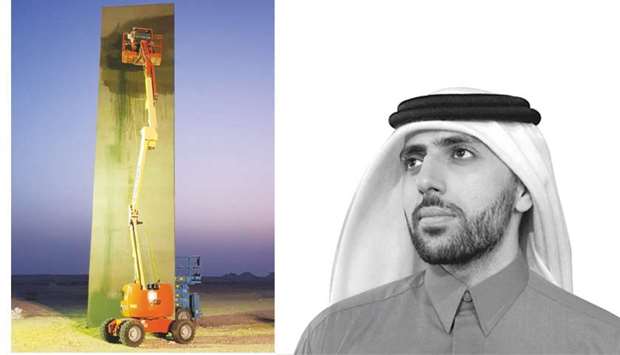Qatar Museums (QM) is eyeing to add surveillance measures to monitor and protect public art in the country as part of its anti-vandalism campaign, Public Art Department acting director Abdulrahman al-Ishaq told Gulf Times.
He said QM is working with both government and non-governmental organisations to push this campaign and engage different segments of the community.
“We've installed four road signs in Zikreet to ensure all rules are outlined explicitly. We seek to add surveillance measures and people who deliberately damage works can be punished in accordance with Qatar’s existing laws,” al-Ishaq added.
He noted that QM partnered with the Qatar National Tourism Council to ensure all tourists in the country are aware of the rules when visiting public arts such as renowned artist Richard Serra's East-West/West-East in Zikreet. It will also continue to work with other organisations on the campaign.
QM officially kicked off its anti-vandalism campaign in September to encourage a collective effort to protect the country’s public art, which al-Ishaq noted, is a fundamental part of Qatar’s cultural life.
Such a move, he stressed, benefits the nation and its people, both socially and economically “so we're asking the community to care for and protect our communities public art.”
According to al-Ishaq, part of the anti-vandalism campaign directly relates to Serra's East-West/West-East with the sculptures being vandalised with marks, tagging and scratching.
“As we speak, the sculptures are currently being restored by a specialised team. All graffiti and markings are being removed. We do this every year but this year, we have emphasised as a community to collectively maintain the sculptures in good condition,” he said. “These sculptures as well as all our public art are a national asset that we as citizens and residents can be proud of.”
Al-Ishaq highlighted the importance of educating the community first about public art and its significance, saying that these artworks are not just decorative elements.
Public art, he stressed, are installations and sculptures that have been strategically placed to contribute to the development and to spark constructive dialogue and debate on social, political and environmental issues.
“Although these artworks are not confined to a closed space, the community must understand that public art is an extension of a vast collection built by QM and it is in part their responsibility to embrace and take ownership of these artworks,” al-Ishaq pointed out.
He said QM is working on organising a debate with Qatar Debates as part of its wider planned talks to spark discussion surrounding public art and vandalism and allow for various opinions to be voiced.
Learning materials will also be accessible for students and families to engage and learn more about Qatar’s public art and the first set of materials will be released very soon, al-Ishaq added.
“We aim to target different segments of the community in order to spread awareness of the public artworks around Qatar. The wider aim is to encourage and foster appreciation and understanding of our public art, and through this we initiate talks, programmes, learning materials, and local public art commissions,” he said.
Al-Ishaq said as a Public Art Department, they are working closely with partners to ensure that all public artworks in Qatar are monitored and maintained.
“Monitoring the artworks has proven to be quite challenging, as many of our artworks are interactive. However, it is our duty, as well as the community’s, to ensure that the integrity of all artworks is not jeopardised,” he said.
“While East-West/West-East has faced the most explicit form of vandalism, all public artworks are susceptible to defacement. Our scope as a department includes the maintenance of these artworks. However, by creating awareness we hope to prevent future ruin or damage,” al-Ishaq added.


